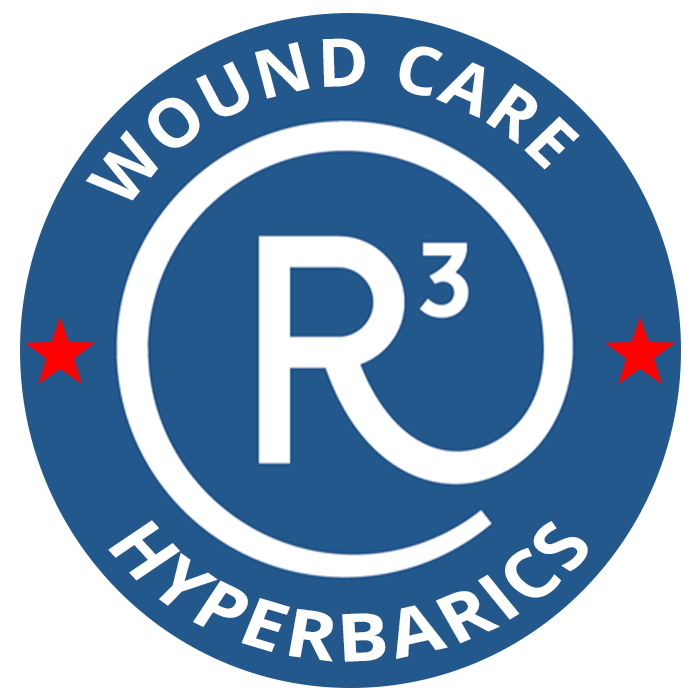Ever wondered why some cuts and wounds heal quickly and with no problem, while others take a long time and eventually get infected or scar afterwards? Well, some wounds can become infected with harmful bacteria, and this is what prevents your body from healing the wound effectively on its own. Some infections are even able to spread to other parts of your body, and this is why it’s important to ensure you receive prompt infected wound treatment.
Recognizing the Symptoms of Infection
It’s definitely safe to treat small wounds on your own; minor cuts and scratches at home, but if your wound becomes infected it will only start to get worse and not better. Make sure to visit a wound care clinic, such as R3 Wound Care & Hyperbarics, as soon as possible if you are suffering from the below symptoms:
When to visit a clinic for infected wound treatment:
- The color is changing to a yellow, yellow-green
- The drainage from the wound smells bad
- There is more pain or swelling in or near the wound
- You see a change in the color or size of the wound
- Read streaks start to appear in the skin around the wound
- You experience fever, nausea or vomiting
- Your skin is warm around the wound
Risk Factors For Infection
Where does the harmful bacteria that can infect a wound come from? It may come from your surrounding skin, the environment you were in when the accident happened, or the actual object that caused the wound in the first place.
The main risk factors for possible infection include:
- If the wound is deep, very big, or has a jagged edge
- If dirt or other small objects are inside the wound
- If the wound was caused by an animal or other person, or a dirty, rusty or contaminated object. In this instance, there’s an added risk of contracting tetanus
- If the wound isn’t cleaned or treated within 8 hours
- If the wound occurs in your hand, foot, leg, armpit, or groin
- Your personal health conditions are also able to increase your risk of infection, ailments such as diabetes, poor blood circulation, weakened immune system, lack of mobility, advancing age, nutrient and vitamin deficiencies
What Are Your Treatment Options?
Once you’ve been wounded it’s time to clean and protect the wound as best as you can. So if you are sure the wound is small and there is no or little infection as of yet, home treatment will be just fine. But remember, if the wound is very large and there is excessive bleeding or if infection occurs alongside the symptoms listed above, make sure to seek proper infected wound treatment.
At-Home Treatment
When treating a small, less serious wound at home, be sure to follow the below steps:
1. Make sure all the equipment you will be using is clean and sanitized with rubbing alcohol, preferably.
2. Ensure your hands are properly washed with soap and water, rinsed and dry.
3. Clean the wound first with water and then with warm, soapy water around the wound. Try not to get soap in the wound.
4. Remove all dirt or things such as glass and gravel with tweezers or gently rub with a clean, damp cloth.
5. Apply the antibiotic ointment or cream, allow the skin to air-dry, and then cover the wound with a bandage.
6. Once this is done, remember to change the dressing once a day – as well as if the dressing gets damp or dirty.
If you don’t see any signs of improvement over 1-2 days, make a plan to see a medical professional.
Medical Treatment
If your wound has become infected or will not heal properly, here are a couple of things that medical professionals will do:
- They are able to treat a bacterial infection with antibiotics. Remember to always complete your course of antibiotics!
- They can tell if the wound needs to be closed with stitches or medical glue, or possibly just clean it further.
- If the wound contains contaminated tissue, your medical professional will remove it––this is called debridement. This will help speed up the healing process and stop a further infection in your body.
- They will decide if you need a tetanus shot or not. Remember tetanus booster shots are recommended every 10 years.
Quality Care You Can Trust
Looking for infected wound treatment? In the Dallas-Fort Worth and San Antonio areas, R3 Wound Care & Hyperbarics offer superior quality surgical wound care in a state-of-the-art facility. If you’ve experienced a wound or infection that can’t heal sufficiently on its own, our wound care treatment options can safely accelerate and enhance your healing process.
R3 Wound Care & Hyperbarics offer treatment options for infections ranging from active debridements, skin grafts and incision and drainage to Transcutaneous Oximetry, Unna Boots and Hyperbaric Oxygen Therapy. No doctor referrals needed!
Visit one of our Texas locations and experience skilled personnel and warm, welcoming treatment centers. The R3 team is here to address your unique medical needs.
Find an R3 Wound Care & Hyperbarics location near you or contact us to schedule an appointment.
References:
https://www.medicalnewstoday.com/articles/325040#how-to-recognize
